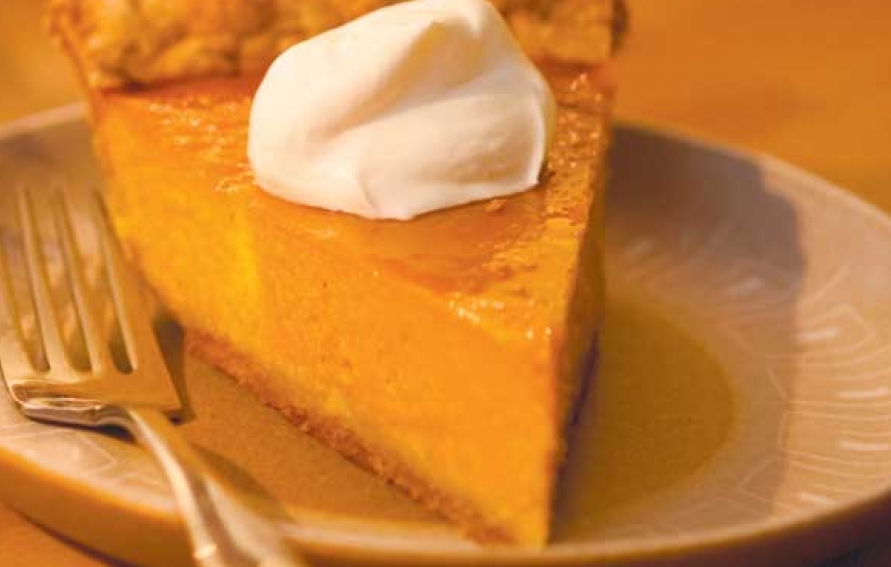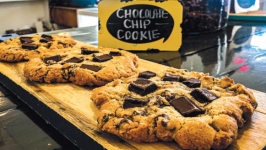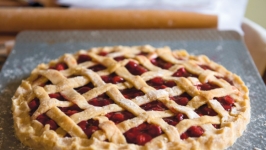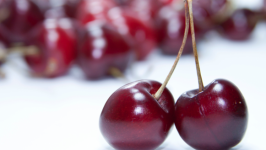Ingredients
- 2 cups cooked squash (pumpkin being the clear favorite)
- 2 eggs
- 1 cup milk
- ¾ cup sugar
- ½ teaspoon salt
- 1 teaspoon ginger
- ½ teaspoon cinnamon
- ½ teaspoon nutmeg
- ½ teaspoon mace
- 1 single piecrust from a recipe of your choice
Instructions
Slice the squash open and discard the strings and seeds. Cut it into chunks about an inch in size. Remove the hard outer skin by paring. Throw all squash into tall pot and add just enough water to cover about ¼ of the squash. Cook over medium heat, stirring often, until the squash has a smooth consistency, with no lumps. Cook a little longer to remove residual moisture, continuing to stir frequently. This whole cooking process may take an hour or more. The squash is done when it will form soft peaks and mound up. Pour into a colander and allow to drain and cool.
Preheat oven to 350°. Line a 9-inch pie plate with the pie crust. In a bowl, beat eggs with a whisk, then add milk and mix well. Put cooled squash in a large bowl, add the egg and milk mixture, and mix these well. Add sugar, salt and spices, and mix well. You might want to taste the mixture to determine if you should add more sugar and spice. Pour this mixture into the prepared pie plate and bake for 1 to 1½ hours or until a knife or toothpick inserted in the middle comes out clean.
About this recipe
We’re all familiar with the expression “As American as apple pie.” But pumpkin pie is, if anything, even more traditionally American. Pumpkin pie brings to mind autumn leaves, cold nights, crisp days and, of course, Thanksgiving. But what’s the story behind this simple pie? Well, it starts with pumpkin’s family tree and native origins. Pumpkin is just one of several varieties of winter squash; others include acorn, butternut, buttercup and hubbard. These winter squash varieties have a hard skin, unlike their cousins the summer squash, crookneck, zucchini and patty pan family. Those hard skins make them good “winter keepers.”
As for origins, squash is native to the Americas. Our European friends don’t have the same squash traditions as we do here in the “New World.” Recipes for pumpkin and squash pie started appearing in commonly used cookbooks on this side of the Atlantic in the 1700s, but they really gained popularity in the 1800s, especially in New England. Our frugal, puritanical forbears took the lowly pumpkin to heart and—in what would almost seem to be a contradiction of their ways—cooked it into pies that were rich and almost decadent with sugar and spice, eggs and milk.
It was also the New Englanders who started the Thanksgiving tradition, which they spread as they migrated from the East Coast to the interior of the United States. But it wasn’t until 1863 that Thanksgiving was declared a national holiday. One of New England’s finest ladies, authors and editors, Sarah Josepha Hale, spent 17 years writing to presidents, congressmen and every state governor, pleading with them to declare a national day of thanksgiving. She felt that if all Americans sat down on the same day to eat a dinner of thanksgiving, it would bring us together and heal our rifts. A provocative thought yet today!
Harriet Beecher Stowe, of Uncle Tom’s Cabin fame, was one of those early New England Thanksgiving practitioners. In Oldtown Folks, she wrote of the Thanksgivings of her childhood:
“When the apples were all gathered and the cider was all made, and the yellow pumpkins were rolled in… and the corn was husked, and the labors of the season were done, and the warm, late days of Indian Summer came in, with just frost enough to crisp the ground of a morning… there came over the community a sort of genial repose of sprit, a sense of something accomplished… and the deacon began to say to the minister…“ I suppose it’s about time for the Thanksgiving proclamation.”
She spends pages writing about the cultural and culinary interminglings of the season. Of pie she says:
“The making of pies at this period assumed vast proportions that verged upon the sublime. Pies were made by forties and fifties and hundreds, and made of everything on the earth… The pie is an English institution, which planted on American soil, forthwith ran rampant and burst forth into an untold variety… Not merely the old traditional mince pie, but a thousand strictly American seedlings from that main stock, evinced the power of American housewives to adapt old institutions to new uses. Pumpkin pies, cranberry pies, huckleberry pies, cherry pies, green-currant pies, peach, pear and plum pies, custard pies, apple pies, Marlborough-pudding pie… ”
Many members of the Beecher family were well known, including Catharine Beecher, who wrote some of the most popular cookbooks and housekeeping manuals of the 1850s. And of course, she had a favorite recipe for pumpkin pie. In a quest to uncover the secrets to a truly authentic American pumpkin pie, I set out to try both her recipe and several others from nineteenth-century American cookbooks. The result of these efforts follows.
Most nineteenth-century recipes start with pumpkin or squash. They aren’t too particular about which you use. I experimented with acorn, hubbard and pumpkin. My taste tester friends found they liked acorn and pumpkin the most, although the pumpkin was the most pleasing to look at. The hubbard was a bit bland, and if used, I would recommend increasing the sugar and the spices. You could also experiment with other squash, especially butternut and buttercup.
To cook the squash, some like to bake it until soft, scrape out the flesh, and then mash it. This method works well, but I prefer to stew the squash as it was done in the nineteenth century. It cooks more thoroughly and banishes any stringiness, making mixing easier. The trick is to cook the sliced and peeled squash in just a small amount of water and stir often. Then allow it to drain in a colander to remove any extra moisture. (An extra bonus: Leftover cooked squash freezes easily and can be used to make more pies later or can simply be eaten as a side dish with dinner. Dressed with salt, pepper and butter to taste, it is both delicious and comforting.)
In addition to using various kinds of squash, the nineteenth-century pie recipes I tested used milk and eggs in varying amounts, usually about 3–5 eggs per quart of milk. I found the pies were better when they were a bit richer, so for my composite “authentic” pie recipe, I used 1–2 eggs per cup of milk. One important tip: Use whole milk, with all of its natural butterfat and richness, for this pie does not include any butter. Most modern recipes for pumpkin pie call for evaporated milk to achieve a richer flavor and denser texture, but a similar result can be had by replacing some of the milk with whipping cream.
“Sugar and spice to taste” is the limited direction offered by most historic recipes. For spices, I used Catharine Beecher’s “fancy” recipe, which is heavy on the ginger and also includes cinnamon, nutmeg and mace. Mace is a favorite spice of mine, and I think it is underused in the modern kitchen. To sweeten, I recommend ¾ cup to 1 cup of white sugar per pie. And don’t forget the salt—just a bit helps accent the taste.
After my research and experimenting, and with the help of my willing taste testers, I can offer the following recipe.







